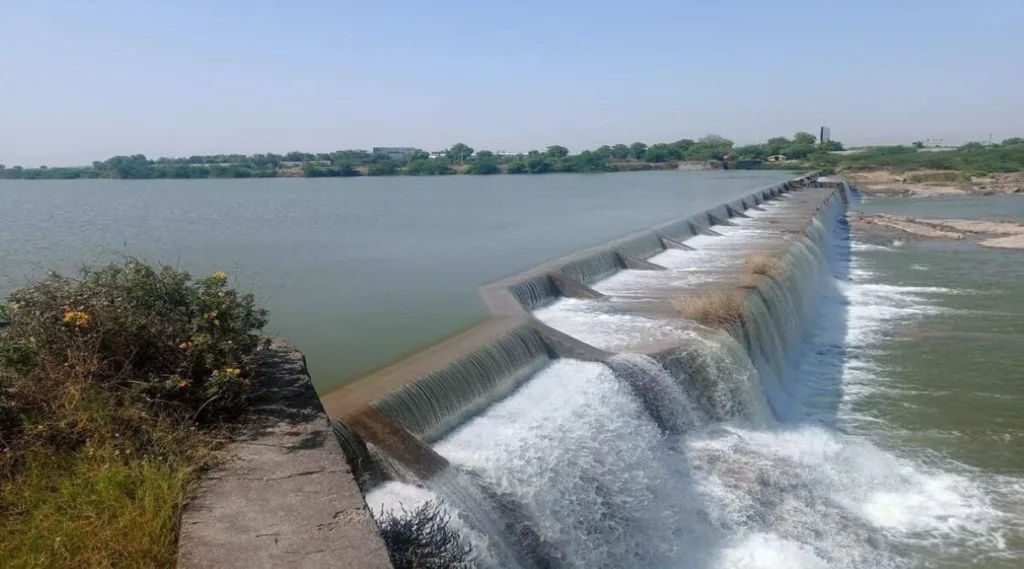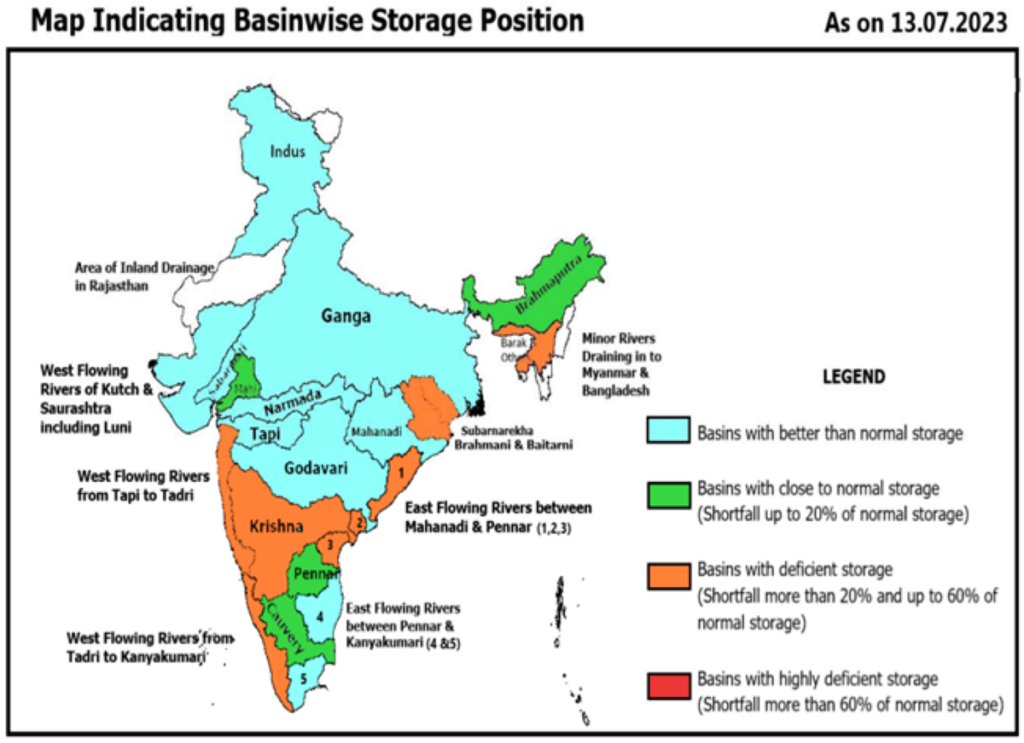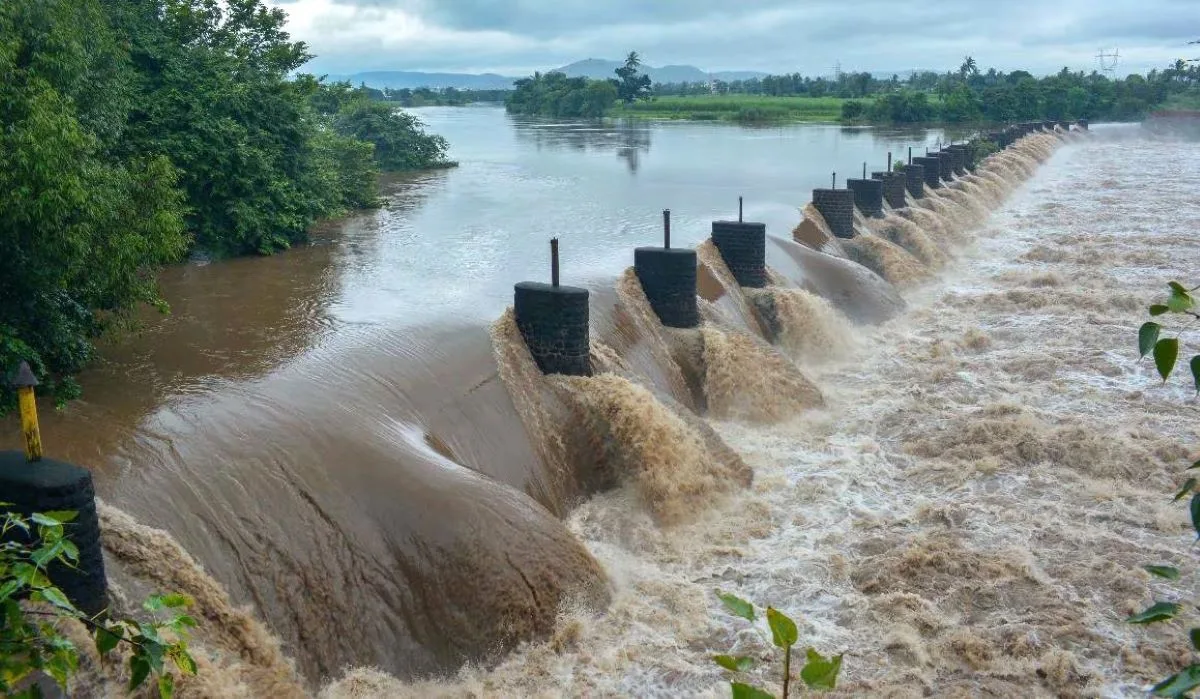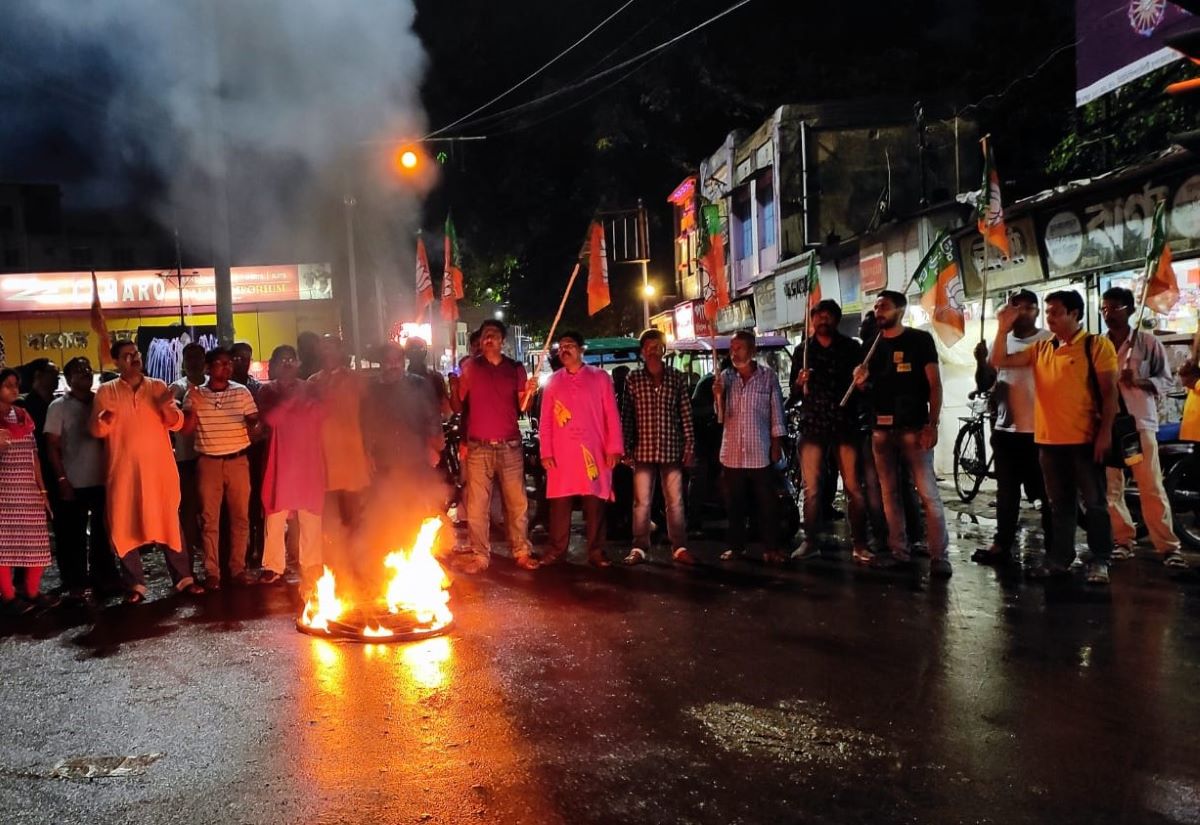The Central Water Commission keeps track of how much water is stored in 146 reservoirs in the country. 18 of these reservoirs are part of hydro-electric projects and can hold a total of 34.960 BCM (units of measurement for water storage). Altogether, the 146 reservoirs can hold 178.185 BCM, which is about 69.11% of the total capacity in the country, estimated to be 257.812 BCM.
According to the reservoir storage report from July 13, 2023, the current amount of water stored in these reservoirs is 59.503 BCM, which is 33% of their total capacity. However, during the same period last year, there was 69.726 BCM of water stored, and the average for the past 10 years was 53.904 BCM.
Therefore, the current storage level in these 146 reservoirs is 85% of what it was last year at this time, and it is 110% of the average storage level for the past ten years. The overall storage position is less than the corresponding period of last year in the country as a whole but is better than the average storage of last ten years during the corresponding period.
Live Storage Available in the Country
Based on the data available for 146 reservoirs as per Reservoir Storage bulletin dated 13.07.2023, the total live storage of the country has been estimated to be 83.816 BCM against 257.812 BCM which is estimated to have been created in the country.

Broad Analysis
Normal storage means average storage of last ten years, Close to normal storage means where shortfall is upto 20% of normal, deficient storage is where shortfall is more than 20% of the normal and upto 60% of the normal, highly deficient means where shortfall is more than 60% of normal.
Better than normal storage is available in Ganga, Indus, East Flowing rivers between Pennar & Kanyakumari, West Flowing Rivers of Kutch & Saurashtra including Luni, Narmada, Tapi, Sabarmati, Godavari and Mahanadi. Close to Normal in Cauvery, Mahi, Pennar & Brahmaputra. Deficient in Subarnarekha, Barak & Others, Brahmani & Baitarni, East Flowing Rivers between Mahanadi &Pennar, Krishna, West Flowing Rivers from Tapi to Tadri and West Flowing Rivers from Tadri to Kanyakumari, and Highly Deficient in Nil.
The numbers of reservoirs having storage more than last year are 49 and reservoirs having storage more than average of last ten years are 68. The numbers of reservoirs having storage less than or equal to 20% with respect to last year is 10 and having storage less than or equal to 20% with reference to average of last ten years is 08.
The number of reservoirs having storage less than or equal to 50% with respect to last year are 35 and having storage less than or equal to 50% with reference to average of last ten years are 24. States having better storage (in %) than last year for corresponding period: Himachal Pradesh, Punjab, Rajasthan, Jharkhand, Odisha, Uttarakhand, Madhya Pradesh & Chhattisgarh.
States having equal storage (in %) to last year for corresponding period: Gujarat.
States having lesser storage (in %) than last year for corresponding period: West Bengal, Tripura, Nagaland, Bihar, Maharashtra, Uttar Pradesh, AP&TG (Two combined projects in both states), Andhra Pradesh, Telangana, Karnataka, Kerala & Tamil Nadu.
Region Wise Storage Status:
Northern Region
The northern region includes States of Himachal Pradesh, Punjab and Rajasthan. There are 10 reservoirs under CWC monitoring having total live storage capacity of 19.663 BCM. As per Reservoir Storage Bulletin dated 13.07.2023, the total live storage available in these reservoirs is 12.554 BCM which is 64% of total live storage capacity of these reservoirs.
The storage during corresponding period of last year was 26% and average storage of last ten years during corresponding period was 35% of live storage capacity of these reservoirs. Thus, storage during current year is better than the corresponding period of last year and is also better than the average storage of last ten years during the corresponding period.
Eastern Region
The Eastern region includes States of Jharkhand, Odisha, West Bengal, Tripura, Nagaland and Bihar. There are 21 reservoirs under CWC monitoring having total live storage capacity of 20.091 BCM. As per Reservoir Storage Bulletin dated 13.07.2023, the total live storage available in these reservoirs is 4.307 BCM which is 21% of total live storage capacity of these reservoirs.
The storage during corresponding period of last year was 20% and average storage of last ten years during corresponding period was 27 % of live storage capacity of these reservoirs. Thus, storage during current year is better than the corresponding period of last year but is less than the average storage of last ten years during the corresponding period.

Western Region
The Western region includes States of Gujarat and Maharashtra. There are 49 reservoirs under CWC monitoring having total live storage capacity of 37.130 BCM. As per Reservoir Storage Bulletin dated 13.07.2023, the total live storage available in these reservoirs is 12.070 BCM which is 33 % of total live storage capacity of these reservoirs.
The storage during corresponding period of last year was 41% and average storage of last ten years during corresponding period was 28% of live storage capacity of these reservoirs. Thus, storage during current year is less than the storage of last year but is better than the average storage of last ten years during the corresponding period.
Central Region
The Central region includes States of Uttar Pradesh, Uttarakhand, Madhya Pradesh and Chhattisgarh. There are 26 reservoirs under CWC monitoring having total live storage capacity of 48.227 BCM. As per Reservoir Storage Bulletin dated 13.07.2023, the total live storage available in these reservoirs is 19.055 BCM which is 40% of total live storage capacity of these reservoirs.
The storage during corresponding period of last year was 37% and average storage of last ten years during corresponding period was 33% of live storage capacity of these reservoirs. Thus, storage during current year is better than the storage of last year and is also better than the average storage of last ten years during the corresponding period.
Southern Region
The Southern region includes States of Andhra Pradesh, Telangana, AP&TG (2 combined projects in both states), Karnataka, Kerala and Tamil Nadu. There are 40 reservoirs under CWC monitoring having total live storage capacity of 53.074 BCM. As per Reservoir Storage Bulletin dated 13.07.2023, the total live storage available in these reservoirs is 11.517 BCM which is 22% of total live storage capacity of these reservoirs.
The storage during corresponding period of last year was 52% and average storage of last ten years during corresponding period was 29% of live storage capacity of these reservoirs. Thus, storage during current year is less than the storage of corresponding period of last year and is also less than the average storage of last ten years during the corresponding period.
Musk also made a bold prediction during the event, stating that superintelligence, referring to AI surpassing human intelligence, could emerge within the next five to six years. In March, Musk registered a company called X.AI Corp in Nevada, according to state filings. He serves as the sole director, while Jared Birchall, the managing director of Musk’s family office, acts as the secretary.
Dan Hendrycks, currently the director of the Center for AI Safety, has been appointed as an advisor to the xAI team. Hendrycks brings valuable expertise in assessing AI-related risks to the table, further strengthening the company’s position in the field.
(Inputs Taken From PIB)



